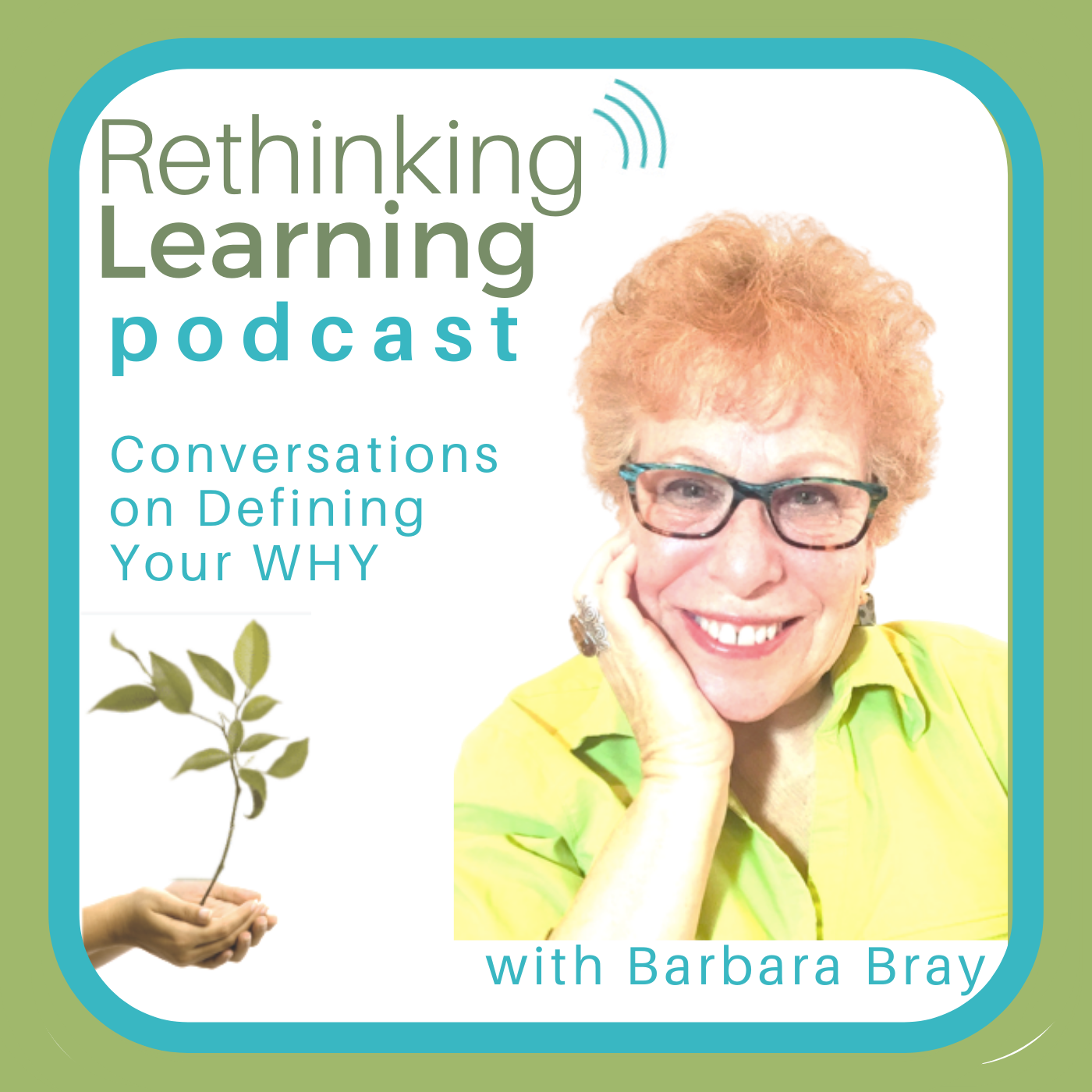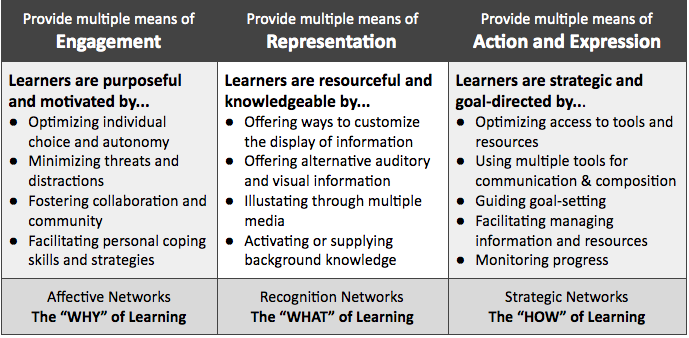Universal Design for Learning (UDL), developed by David Rose and Anne Meyer from CAST (Center for Applied Special Technology), provides suggestions on how learners can reduce barriers and maximize their learning. When I first learned about UDL, the principles started with the WHAT. After 2014, Rose, Meyer, and David Gordon co-authored “Universal Design for Learning: Theory and Practice,” demonstrating why UDL starts with engagement. This made so much sense to me, so I updated my materials to represent the changes. I believe UDL can support learners of all ages who want a framework for learning and who want to define their WHY for learning.
The three UDL principles:
- Multiple Means of Engagement = The WHY of Learning
- Multiple Means of Representation = The WHAT of Learning
- Multiple Means of Action and Expression = The HOW of Learning
I love that UDL starts with the WHY especially when learners are motivated to want to learn. The WHY is about what learners are interested in and passionate about. I like the idea of being curious about who we are as learners. Why not ask ourselves WHY we would want to learn in the first place?
Why are we engaged or not engaged in learning?
Why do we need to be motivated to want to learn?
Why would we want to become independent and self-directed?
UDL Guidelines
The UDL Guidelines at http://udlguidelines.cast.org/ based on scientific insights into how humans learn provides a framework to improve and optimize teaching and learning for all people. Learn more about the Universal Design for Learning framework from CAST. Below is a shortened version of the structure from CAST’s website organized both horizontally and vertically. Vertically, the Guidelines are organized according to the three UDL principles starting with Multiple Means of Engagement.
Horizontally, the options scaffold from “Access” to “Build” and then to “Internalize” to develop “Expert Learners” who are resourceful and knowledgeable, strategic and goal-directed, purposeful and motivated. The table below provides only a few examples of the checkpoints.
The UDL Guidelines at http://udlguidelines.cast.org/ provide opportunities for you to learn more about how the principles are detailed under the Guidelines. The bulleted lists below each Guideline are the corresponding checkpoints that go deeper. by linking to strategies and research that can provide you detailed suggestions for teaching and learning.
During workshops, participants explore the checkpoints to discover learning strategies and research. Here is an example:
____
UDL Principle: Multiple Means of Engagement
- Guideline: Provide options for self-regulation
- Checkpoint: Promote expectations and beliefs that optimize motivation.
- Strategy: Model high expectations and self-reflection.
- Checkpoint: Promote expectations and beliefs that optimize motivation.
____
I decided to explore the UDL Guidelines and checkpoints from my perspective as a learner. I know that I need to be motivated first about something new that I want or need to learn. There has to be a reason or purpose for my learning. When I thought about this, I got it why UDL starts with Multiple Means of Engagement. This is what makes learning personal for me. It is not about what someone else teaches me unless that is what I prefer or wish to learn specific information that I cannot find on my own. I first have to be interested in what I want to learn. I believe that most people need to be motivated to want to learn before they are engaged in the process.
Refer to my post Levels of Engagement: Balancing Challenges and Skills that brings in research on flow and moving from compliance.
The next post I write on UDL is on how to create a Learner Profile.
*****
For all of the Rethinking Learning podcasts with Barbara Bray, click on the podcast tab at the top, the logo below, or go to https://barbarabray.net/podcasts/
Go to this page for more information about Barbara’s new book, Define Your WHY.








[…] need more information to figure out who they are as learners using Universal Design for Learning (UDL). As a co-author on our book, How to Personalize Learning, Kathleen McClaskey and I created a […]
[…] The teacher invites students to take surveys and polls for a consensus on issues. The students consult with the teacher to share how they learn best and have conversations about their strengths, interests, and challenges. During the consultation, the teacher and student determine the most appropriate tools, resources, and learning strategies to support their learning. This is where the teacher starts developing the relationship with each student that changes as they learn. The student discusses how they plan to meet their learning goals and the best way to assess what they learned with the teacher. These conversations validate them as a learner. The teacher then designs the lesson from the feedback, surveys, and opinions to determine the best instructional strategies based on the diverse students at the extremes based on Universal Design for Learning. […]